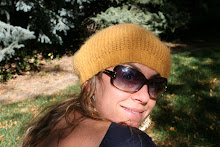Choosing a directional course for a week in the studio is somewhat different than choosing the direction for a week in a Montessori classroom. In the studio the horizon is vast and we must rely on our conversations, observations and findings to act as a compass for discovery. After considering last weeks findings, we decided to evolve our exploration of line to incorporate a few other languages of expression.
We introduced a tactile table to explore different ways of generating or feeling a line. The students were introduced to the table with eyes closed, exploring the sensations of varying surfaces beneath their fingertips. Next, a brief demonstration on creating a rubbed print was offered. Several students enjoyed sampling a variety of textural prints and examining the resulting lines.




Next, we turned on the projector, with two obvious possibilities for exploration. The first was to compose projected images using a few baskets full of interesting objects with provocative lines. Some of the objects included: catalpa pods, dried fauna from the foothills of Colorado, collected feathers, twigs, vines, ribbons and pipe cleaners. We selected a neutral palette for our objects to refine our focus on line.

Second, we had a tray on the shelf holding a small clipboard, a dry erase marker, a small dry square of terry cloth and several sheets of laminate acetate. The students were encouraged to draw whatever they chose and then offered the opportunity of projecting and drawing these enlarged images. This activity was enthralling to many students and below are a few of the drawings in progress:



The students were introduced to the tray and art mat supplies in the classroom in an effort to evolve awareness of studio protocol. Our introduction involved an invitation to select a tray and art mat and bring them to the table. The student was then offered the choice of carrying the tray to our inspiration shelves and selecting a few interesting objects they would like to explore and possibly draw. This activity was chosen by nearly all students visiting the studio. After discussing our midweek findings we agreed that students seemed to be more successful with this project when a still life was already set up on the drawing table. We chose to offer this option for students attending on Thursday and the result was an increase in shared conversation about the drawn and seen images (with the still life set up, only an art mat was necessary).
 It was another interesting week in the studio and our exploration of line has generated many interesting conversations and discoveries. Students are often overheard pointing out lines in the environment: the lines of a brick wall, cracks in a sidewalk, veins in a leaf or the rough lines of bark on our pear tree. This ability to really look at their environment with deftness and clarity always astounds me and reminds me of how much I can learn from them. They find beauty and wonder everywhere; in spider webs, roly-poly bugs, decaying fruit and meandering clouds. After some considerations and many conversations with Kathryn, we have decided to evolve our line discussion to include shape. A shape can be made when a line or lines connect. This seems to be the natural "next step" in our exploration.
It was another interesting week in the studio and our exploration of line has generated many interesting conversations and discoveries. Students are often overheard pointing out lines in the environment: the lines of a brick wall, cracks in a sidewalk, veins in a leaf or the rough lines of bark on our pear tree. This ability to really look at their environment with deftness and clarity always astounds me and reminds me of how much I can learn from them. They find beauty and wonder everywhere; in spider webs, roly-poly bugs, decaying fruit and meandering clouds. After some considerations and many conversations with Kathryn, we have decided to evolve our line discussion to include shape. A shape can be made when a line or lines connect. This seems to be the natural "next step" in our exploration.Note: As an introduction to the week in the studio, we joined each class and read, Lines that Wiggle, by Candace Whitman, during the initial class meeting on studio day.



No comments:
Post a Comment